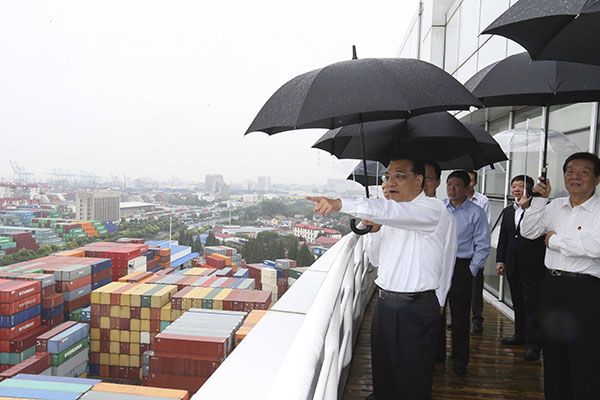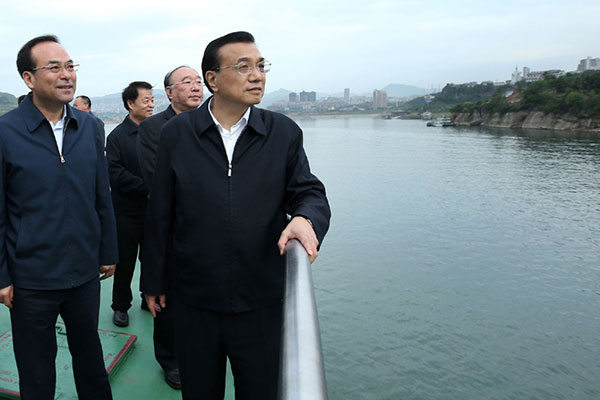
Premier Li Keqiang (L front) visits the Waigaoqiao logistics center of the China (Shanghai) Pilot Free Trade Zone (FTZ), east China’s Shanghai, Sept 19, 2014. [Photo/Xinhua]
Yangtze River is known as China’s “Mother River”. The Yangtze River Economic Belt also plays an important role on China’s economic map. If the river is likened to a dragon, Shanghai is the head, while Chengdu and Chongqing are the tail. At the State Council executive meeting on March 30, two themes were discussed concerning the “head” and the “tail”.

Premier Li Keqiang (R front) inspects shipping and environment protection on the Yangtze River in southwest China’s Chongqing, April 28, 2014.[Photo/Xinhua]
The meeting decided to accelerate promoting the construction of a science and technology innovation center in Shanghai. The Premier expressed the hope that Shanghai’s success can be replicated nationwide.
The meeting mentioned “mechanism” and “system” many times, showing that pilot reforms will be promoted through new modes. Just as the Premier stressed at the meeting, China’s economic transformation needs a change in development mode and management mode.
The “tail” cities - Chengdu and Chongqing - are seen as radiators to drive the development of the western region, and the Chengdu-Chongqing city cluster development plan is the first cross-province urban plan in the area.
Premier Li asked the Chengdu-Chongqing city cluster to explore new channels in the new type of urbanization and agricultural modernization, which also needs mode innovation. The deployment is important to resolve the imbalanced development southeast of the Hu Huanyong Line – an imaginary line drawn by Chinese geographer Hu Huanyong in 1935 that divides China into two approximately equal parts and marks a striking difference in the distribution of the country’s population.
The Premier expressed the hope that the deployment can help make China’s urbanization more reasonable, with balanced development in different regions and cities.
